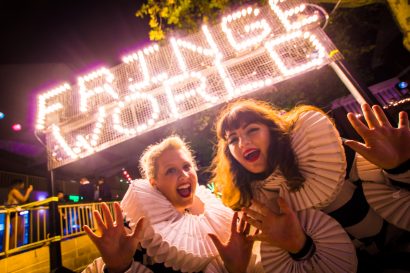Mark Naglazas talks to Benjamin Northey about the West Australian Symphony Orchestra’s new venture into the Golden Age of movies.
Where the sound of movies began
29 November 2019
- Reading time • 5 minutesFilm
More like this
- The great unknown
- Darkness lights the way
- Shining a beacon of light on our history
In recent years the Western Australian Symphony Orchestra, like many orchestras around the world, has drawn large audiences with their programs dedicated to the music of modern fantasy blockbusters such as Star Wars, Harry Potter, Lord of the Rings, E.T: The Extraterrestrial and Back to the Future.
For their latest trip to the movies WASO is going where few contemporary orchestras dare to venture — back to Hollywood’s Golden Age and the birth of the symphonic score that we now recognise as the sound of the movies. If you want to know what inspired John Williams this is the concert for you.
Under the baton of Benjamin Northey, chief conductor of the Christchurch Symphony Orchestra and the associate conductor of the Melbourne Symphony Orchestra, WASO is playing rarely performed selections from Erich Wolfgang Korngold’s score for The Adventures of Robin Hood, Max Steiner’s soundtracks for Gone With The Wind and Casablanca, Franz Waxman’s music for Sunset Boulevard and Bernard Herrmann’s anxiety-inducing atmospherics for Psycho.
The programme is rounded out by more modern pieces that are grounded in the stirring, deeply emotional scores of Golden Age Hollywood, such Maurice Jarre’s Theme from Lawrence Arabia, John Barry’s soundtracks for the James Bond movies and Ennio Morricone’s beloved music for The Mission.
Northey says that WASO’s Hooray for Hollywood program doesn’t have the instant recognition factor of recent box office hits such as Lord of the Rings or Harry Potter. However, the scores of Hollywood’s Golden Age are of such quality they deserve a concert outing of their own.
Indeed, he believes the work of pioneers of the form such as Korngold, Steiner, Waxman and Hermann created the sound that was later re-embraced by Hollywood in the 1970s after a period of song-based soundtracks.
“It was fortuitous that at the time Hollywood was transitioning from silent to sound cinema Europe was plunging into turmoil. So you had huge cohort of incredibly talented composers and musicians seeking refuge in Hollywood and looking for work,” Northey tells me over the phone from his home in Melbourne.
“Both Max Steiner and Erich Korngold were wunderkinds in their native Austria. They had written operas in their teens and were feted as the next generation after Mahler and Brahms and other composers of the late 19th and early 20th century. They wrote in a Late Romantic style which they then brought to film.
“So when you listen to Korngold’s score for The Adventures of Robin Hood, for example, he’s writing to serve the purpose of an Errol Flynn swashbucklers but he’s also using the language of the orchestral world of the first half of the 20th century,” continues Northey.
“This is why they were so good. You had the best composers in Europe working in an industry that had also attracted all these musicians who were fleeing the rise of Nazism. When you watch these movies and listen to these scores you can hear the virtuosity.”
While Hollywood welcomed this new wave of composers from Europe it took time to acknowledge their contribution. When Korngold’s score for Anthony Adverse won the Oscar in 1936 it was the head of the music department who collected the statuette on Hollywood’s night of nights. There was so much embarrassment about the world-famous composer not getting the Oscar the Academy was forced to change the rules to ensure was acknowledged.
Northey says that by the 1960s Hollywood had abandoned the full-blown symphonic scores, which was often played throughout the entire movie, for much sparser soundtracks, with popular songs filling out the space between dialogue or nothing at all.
The symphonic score made a comeback in the mid 1970s with when Lucas and Spielberg started reaching back into Hollywood history with films such as Jaws and Star Wars, ushering in the return of the kind of soundtrack that dominated movies in the Golden Age, in which each character had their own theme and there is wave after wave after surging emotion.
“We have a lot to thank John Williams for,” says Northey. “He recognised how fantastic a symphonic soundtrack is in underscoring a range of emotions to enhance the viewing experience. It is fascinating that sound was brought to us by refugees fleeing the Nazis. It’s this bit of history we are filling in with Hooray for Hollywood.”
Hooray for Hollywood plays the Perth Concert Hall 6 December 2019.
Like what you're reading? Support Seesaw.






